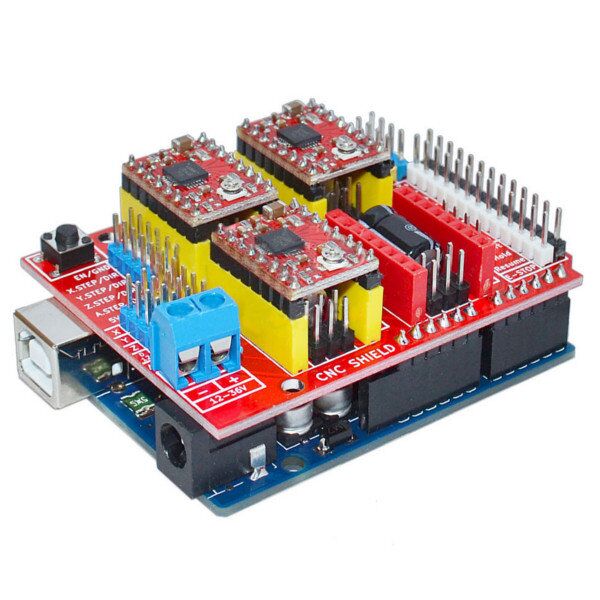

- #RASPBERRY PI GRBL CNC HAT HOW TO#
- #RASPBERRY PI GRBL CNC HAT SERIAL#
- #RASPBERRY PI GRBL CNC HAT DRIVERS#
- #RASPBERRY PI GRBL CNC HAT DRIVER#
#RASPBERRY PI GRBL CNC HAT SERIAL#
Raspberry Pi Serial Port setup Uploading new firmware Version 2.58+Īs of this version firmware can directly be upload from the Raspberry Pi.
#RASPBERRY PI GRBL CNC HAT HOW TO#
HobbyTronics has a good tutorial on how to set it up and test it. In order for the GRBL to communicate with the Raspberry Pi, the hardware serial port on the Raspberry Pi needs to be enabled and working.
#RASPBERRY PI GRBL CNC HAT DRIVERS#
If the external drivers you are using needs active high you will not be able to use the enable pin but can instead just connect the external drivers enable pin to 5V to enable it.

Pololu Drivers activate when the enable pin goes low/grounded. Special attention needs to be taken with the Enable pin.

#RASPBERRY PI GRBL CNC HAT DRIVER#
(Check the external driver details before connecting.) External Drivers usually run at 3.3-5V logic with the Raspberry Pi CNC board using 5V. Configuration is done with the two rows of solder-able jumpers situated under the board.īelow are images of the pins(in red) needed to connect to an external stepper driver for each axis. The 4th Stepper Driver Socket can be configured to clone any of the other Axes. V2.51 Introduces End-stop and Probe line filters to prevent noise on the lines. Setting $22 also activated the Homing functionality. GRBL v0.9 setting $21 needs to be set to 1 to activate hard-limits. The pins are pulled high by the micro controller's internal pull-ups and will activate the end-stop when the pin is connected to ground. The End-stop socket shares a common ground that connects to each axis end-stop. In the tables below High indicates that a Jumper is inserted and Low indicates that no jumper is inserted.Įnd Stops use normally-open push-button type switches. The stepper drivers are current limiting and will overheat if they are not connected. WARNING: Do not power up the board with stepper drivers installed if they are not connected to stepper motors. IMPORTANT: None of the components should be powered while installing or configuring. We recommend the Pololu DRV8825 driver carrier boards to complete this CNC Board. The board plugs directly into the Raspberry Pi General Purpose Input/Output pins, with the micro-controller and Raspberry Pi communicating via serial. The RPI CNC Board combines a real-time CNC controller(Micro-controller running GRBL) with a powerful credit card size computer(Raspberry Pi).īy combining the two systems we have created an eco-system where the Raspberry Pi provides benefits like: Processing power, connectivity(IOT) and a well supported community. Please see installation, configuration, and quick start guide below. This kit is powered by Raspberry Pi CNC board from Protoneer. 1 x Aluminum Heatsink for Raspberry Pi B+/2/3 (2-Pack).1 x Pre-configured Raspberry Pi CNC User Interface SD Card (Class 10 16GB SanDisk).1 x Female DC Power adapter – 2.1mm jack to screw terminal block.3 x DRV8825 Stepper Motor Driver Carrier, High Current.3 x Stepper Motor – NEMA 23 – 125 oz.in (200 steps/rev).


 0 kommentar(er)
0 kommentar(er)
